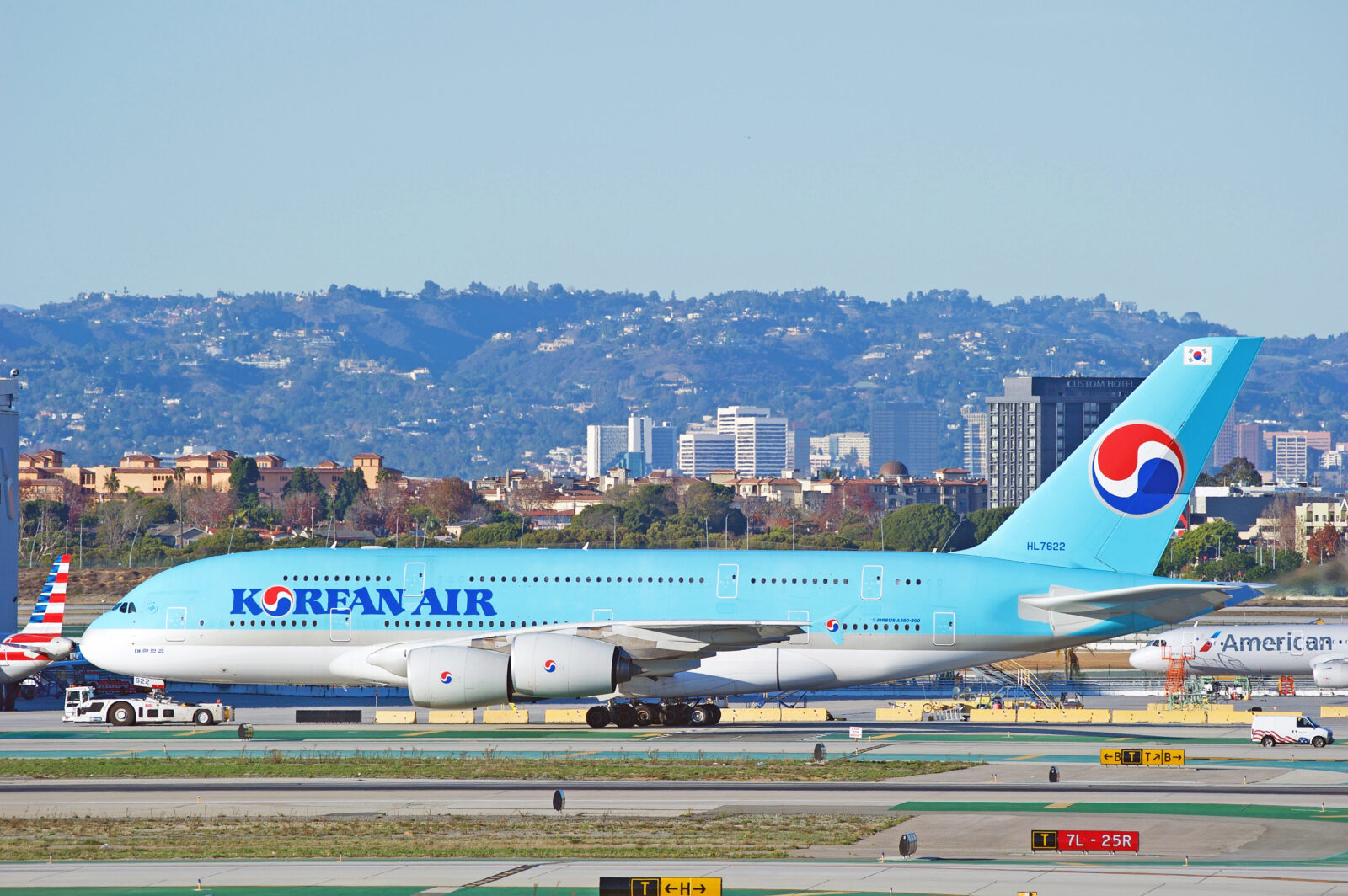
Korean Air says it is changing its inflight service protocols over rising turbulence fears following a slew of high-profile incidents, including the fatal turbulence incident that struck Singapore Airlines flight SQ321 in May.
Up until now, Korean Air used to continue cabin service up to 20 minutes before landing, but the Seoul-based carrier is now going to double the amount of time from landing that no service takes place in an attempt to reduce turbulence-related injuries.
As of July 1, Korean Air flight attendants have been instructed to stop cabin service 40 minutes before landing. The idea is to wrap up cabin service which would involve carts being out in the cabin, and flight attendants serving hot drinks before a long-haul aircraft begins its descent for landing.
Although recent turbulence incidents have occurred at high altitude, research by the US National Transportation Safety Board (NTSB) in 2021 revealed that the majority of turbulence related accidents occur during the descent phase of flight.
In fact, according to the NTSB, the descent and approach accounted for just over half of all turbulence-related accidents and nearly 50% of serious injuries, including broken ankles and legs from flight attendants falling in the aisle.
Interestingly, turbulence-related accidents were more likely to occur just after an aircraft begins its descent, suggesting that its finishing cabin service before the plane starts to descend could be a crucial step in reducing turbulence-induced injuries.
“Turbulence is becoming more frequent, especially as the aircraft descends, due to large temperature differences between altitudes,” a spokesperson for Korean Air explained in a statement. “This is why Korean Air cabin services will now end before the aircraft begins its descent.”
Korean Air warned that the number of turbulence-related accidents at the carrier has doubled since 2019 and the carrier has urged passengers to keep their seatbelts fastened at all times, even when the seatbelt sign is switched off, due to the risk of clear air turbulence.
Following the Singapore Airlines tragedy, the airline quickly changed its own service protocols, telling flight attendants to suspend cabin service and to sit in their jumpseats whenever the seat belt sign is switched.
Previously, Singapore Airlines allowed cabin service to continue during mild turbulence, with the exception that hot drinks could no longer be served.
Korean Air says, however, it is still evaluating whether further changes need to be made to its onboard service procedures.
On Sunday night, at least 30 passengers on an Air Europa flight from Madrid to Uruguay were injured when their Boeing 787-9 Dreamliner was rocked by severe turbulence over the South Atlantic.
Dramatic video taken from inside the cabin showed extensive damage from where passengers had been thrown against the ceiling because they were not wearing their seatbelts. One passenger was even lodged inside the ceiling and had to be pulled down by his seatmates.
Related
Mateusz Maszczynski honed his skills as an international flight attendant at the most prominent airline in the Middle East and has been flying ever since... most recently for a well known European airline. Matt is passionate about the aviation industry and has become an expert in passenger experience and human-centric stories. Always keeping an ear close to the ground, Matt's industry insights, analysis and news coverage is frequently relied upon by some of the biggest names in journalism.







